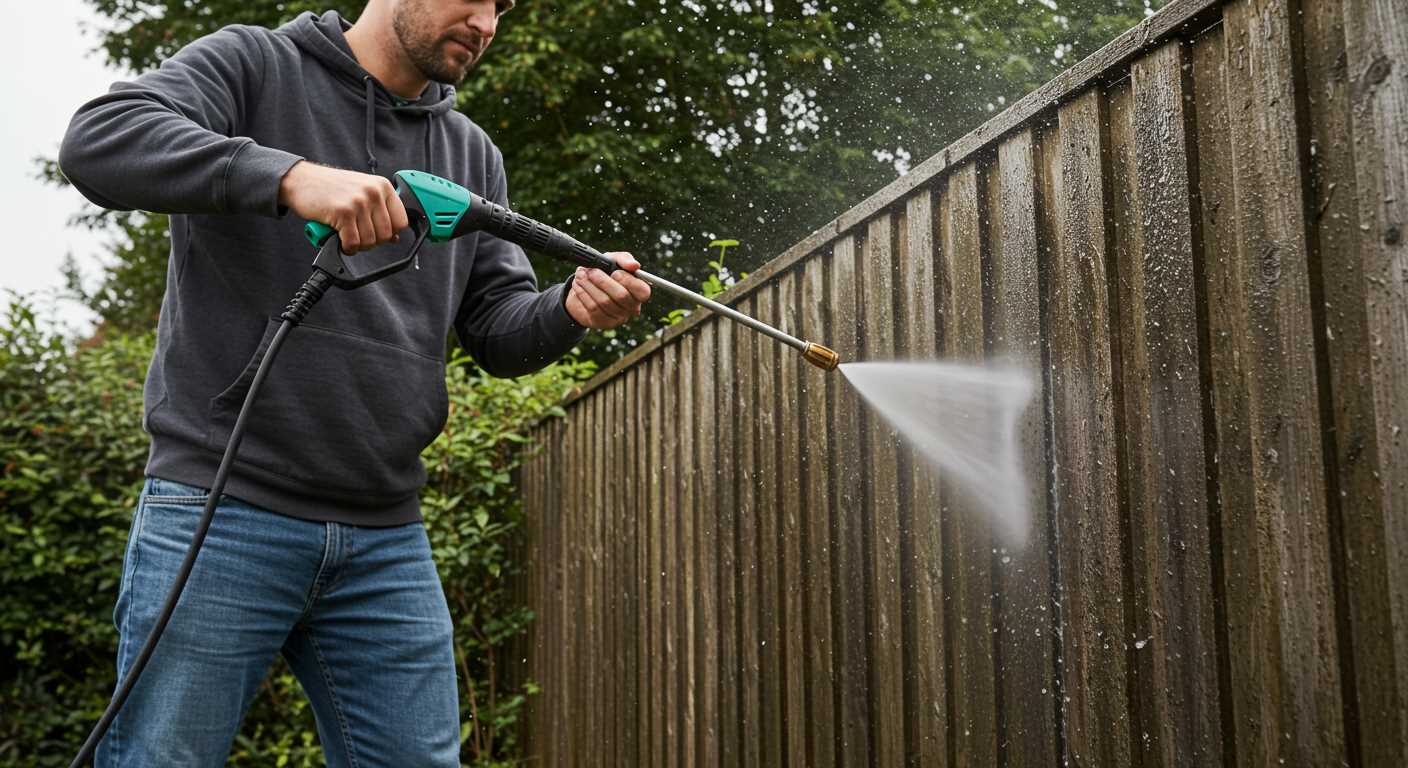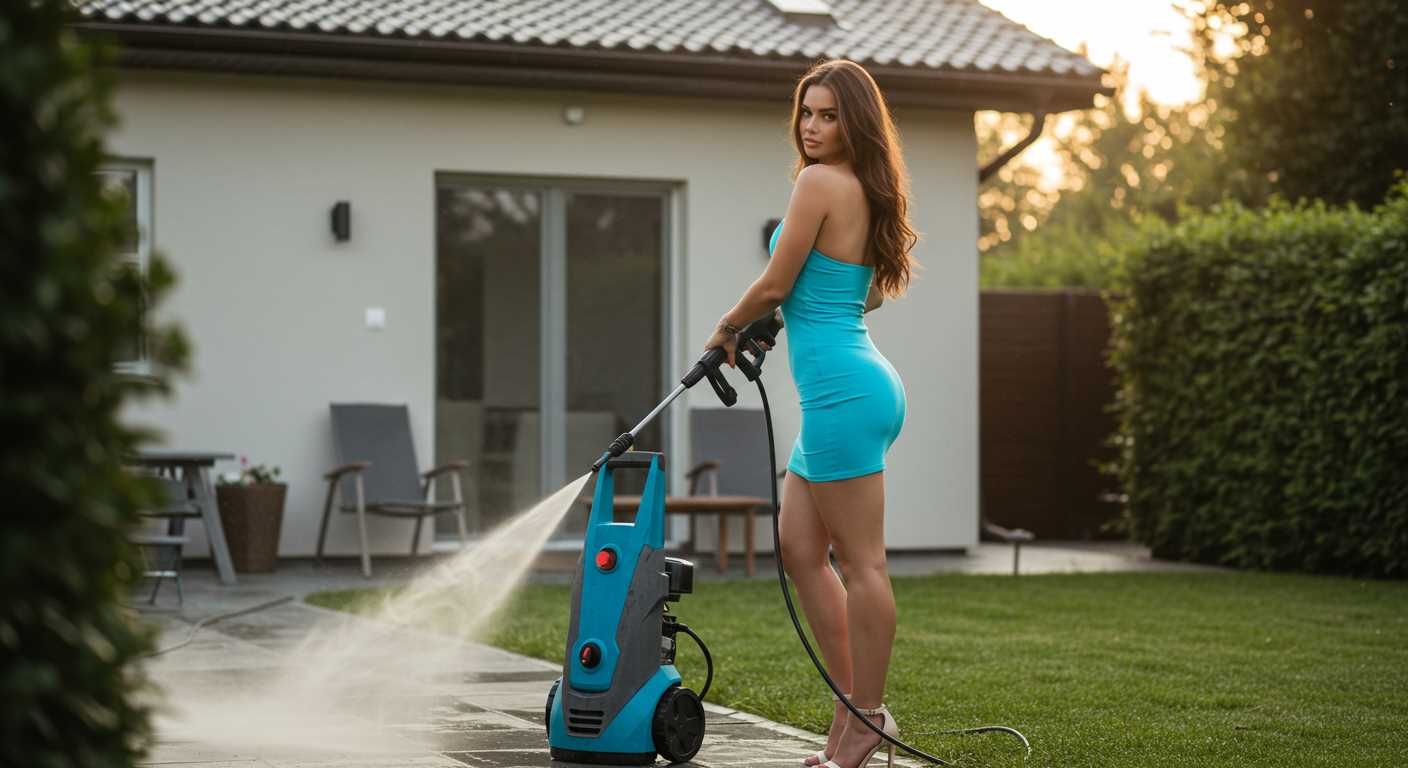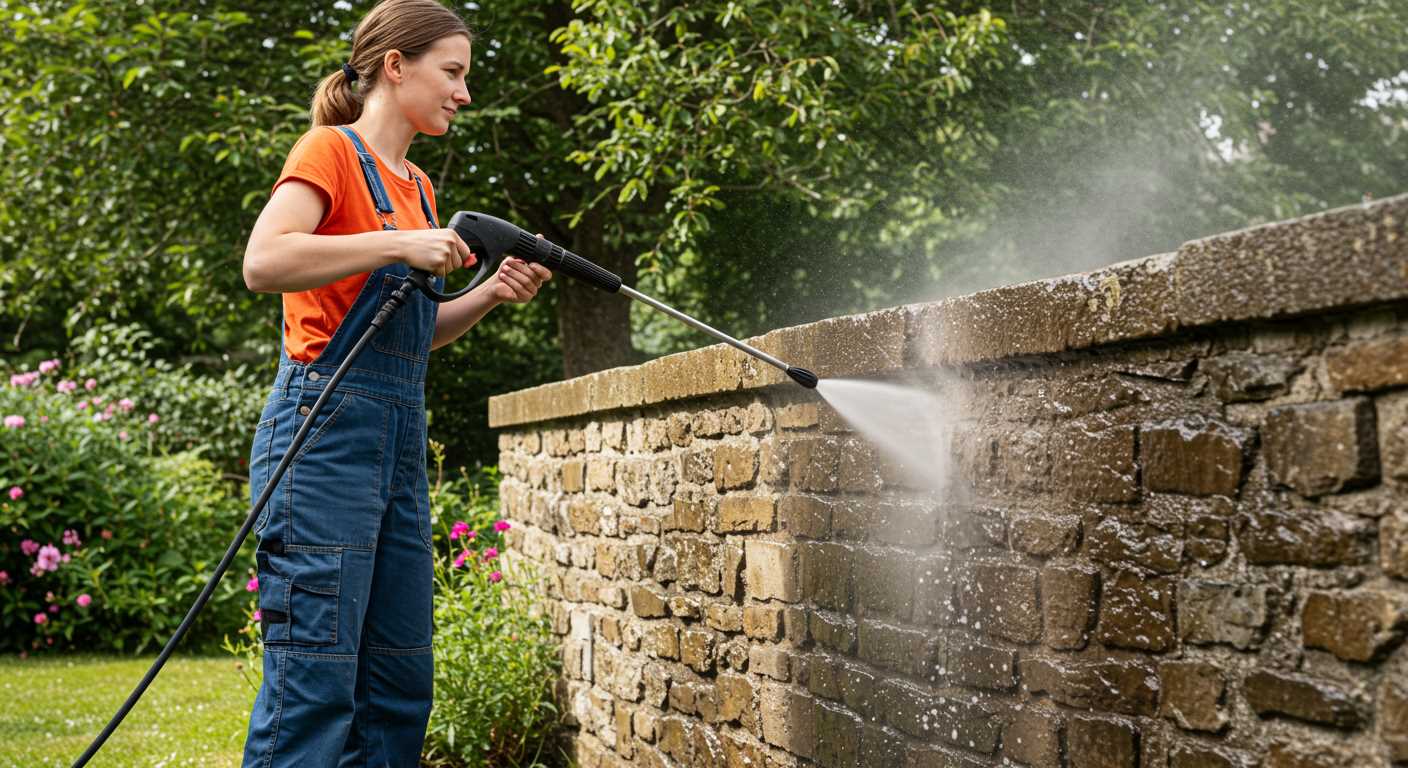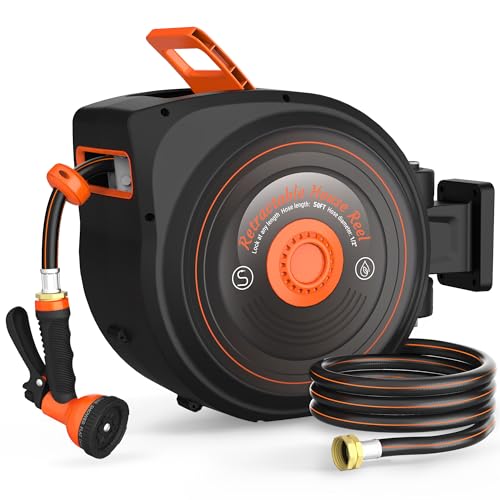



Choosing the right high-pressure cleaning device requires an understanding of its specifications and capabilities. For instance, select a model with a suitable PSI (pounds per square inch) rating for your intended tasks. A range of 1300 to 1900 PSI typically suffices for residential cleaning, while commercial applications may necessitate upwards of 3000 PSI.
Water flow rate is another critical factor. Measured in GPM (gallons per minute), this metric indicates how quickly water is delivered. A higher GPM results in faster cleaning, especially for extensive areas. Look for devices with at least 1.5 GPM for optimal residential use.
Electric versus gas-operated machines also plays a significant role in your choice. Electric models are generally quieter, easier to maintain, and ideal for light to medium jobs. Conversely, gas units provide portability and higher power, suitable for demanding tasks but require more upkeep.
Furthermore, consider the nozzle types included with the machine. Different spray patterns can assist in tackling various surfaces: a narrow stream for tough stains and a wider spray for delicate areas. Ensure the nozzle options meet your cleaning requirements.
Remember to factor in storage and portability. A lightweight, compact model may be more suitable for those with limited space, while heavier-duty options could be needed for extensive or professional cleaning tasks. Assess your available storage and how frequently you’ll be using the equipment to inform your decision.
Choosing the Right Pressure Washer for Your Needs

Start by assessing the tasks you intend to tackle. If it’s light-duty chores like washing cars or cleaning patios, opt for an electric model with a pressure rating between 1300 and 2000 PSI. These units are quieter and more convenient for smaller jobs.
For medium-duty tasks, such as washing driveways or decks, select a gas unit with a pressure range of 2000 to 2800 PSI. Gas models provide more power and are more mobile, suitable for larger areas without the need for an electrical outlet.
For heavy-duty applications, like removing paint or cleaning large structures, a unit exceeding 2800 PSI is recommended. Choose a commercial-grade machine that handles tough jobs efficiently. Look for models equipped with adjustable pressure settings to match various surfaces and cleaning requirements.
Consider the nozzle options as well. A wider variety of nozzles allows for better control over the spray pattern and intensity. Nozzles labelled from 0 to 40 degrees provide different spray widths for diverse cleaning instances.
Additionally, check for features that enhance usability and safety. A well-designed handle, wheels for mobility, and safety locks can significantly improve the user experience. Models with built-in detergent tanks simplify the process of applying cleaning solutions.
Examine the maintenance requirements of each unit. Gas models often require more upkeep than electric ones. Ensure you choose a product with accessible parts and good customer support from the manufacturer.
Lastly, compare warranty options. Longer warranties usually indicate reliability and can save costs on repairs or replacements in the future. Always read reviews to gauge user satisfaction and performance of the chosen unit before making a decision.
Understanding Terminology and Specifications
The cleaning unit’s performance hinges on several key specifications. The two main figures to consider are PSI (pounds per square inch) and GPM (gallons per minute). PSI measures the pressure applied to the surface, determining the force of the water. A higher PSI is ideal for stubborn stains, while lower values suit lighter cleaning tasks.
GPM relates to the flow rate, indicating how much water is used. A machine with high GPM rinses away debris more effectively, but combines the PSI for optimal results. Aim for a balance between both figures based on your intended use.
Another key term is cleaning units, calculated as PSI multiplied by GPM. This figure gives a better idea of overall effectiveness, allowing for direct comparisons between models.
Don’t overlook the motor type. Electric models are quieter and easier to maintain, making them ideal for residential tasks. In contrast, gas-powered variants deliver more power and are suited for heavy-duty work like commercial cleaning.
Also, consider the nozzle types. Different nozzles offer varying spray patterns: 0-degree nozzles provide direct, high-pressure streams, while wider angles such as 25 or 40 degrees disperse water over a larger area, reducing surface damage risk. Adjustable nozzles offer versatility for multiple tasks.
Lastly, check for accessories and attachments. Some cleaners come with brushes, surface cleaners, or extension wands that make specific tasks easier. Assess your needs to see which extras will enhance your user experience.
Best practices for operating a pressure washer safely

Always wear appropriate personal protective equipment (PPE), including safety goggles, gloves, and non-slip footwear. This reduces the risk of injury from high-pressure water blasts and debris.
Before turning on the machine, inspect all connections and hoses for leaks or damage. A small crack can lead to serious accidents. Ensure the unit is placed on a stable surface to prevent tipping.
Keep a safe distance from people, pets, and sensitive materials while in use. Maintain at least 10 feet distance to minimise the risk of injury or damage from flying debris.
Adjust the nozzle according to the task. Use a wider spray pattern for delicate surfaces and a tighter stream for tougher stains. This prevents unintended damage and ensures more effective cleaning.
Make sure to never point the wand at yourself or others. The force of the water can cause significant injuries. Always aim the nozzle downwards while adjusting settings or moving the unit.
Be aware of your surroundings, especially overhead wires or low-hanging branches. These can become hazardous when handling the wand or hose.
After completing the job, disconnect the water supply before turning off the power. This prevents pressure buildup and minimises the chance of accidents during cleanup.
Store the equipment in a dry, secure area, ensuring that all hoses are coiled properly to avoid kinks. Regular maintenance checks will prolong its life and ensure safe operation for future use.
Common cleaning tasks suited for pressure washing
Driveways and patios benefit immensely from a thorough clean. Over time, grime, oil stains, and algae can accumulate. Using a unit with a pressure rating of at least 3000 psi combined with a 25-degree nozzle will effectively remove these contaminants.
Wooden decks require attention to avoid splintering and discolouration. A lower pressure range, around 1500-2000 psi, with a fan tip will help preserve the wood while eliminating dirt and mildew without causing damage.
Exterior walls can quickly lose their appeal due to dirt and mould. A solution of detergent sprayed before rinsing with high pressure treats these areas effectively, making sure to use a wider nozzle to lessen the chance of damaging the siding.
Vehicles can be cleaned safely with the correct setup. Aim for a pressure level around 1200-1900 psi using a narrow nozzle. This pressure removes dirt without stripping wax or damaging paint.
Outdoor furniture, especially those made of plastic or fabric, looks refreshed after treatment. A detergent option followed by a rinse will lift stains and restore the furniture’s appearance.
Fences also collect dirt and grime. A moderate approach with a pressure range of about 2000 psi works well here, particularly for wooden or vinyl structures, ensuring a clean surface without risk of splintering the wood.
Lastly, preparation before painting enhances the finish. Cleaning surfaces removes old paint and contaminants, contributing to better adhesion. Using a high-pressure unit around 3000 psi with соответствующий nozzle will suffice for this task.
Maintenance tips to prolong the lifespan of your cleaning equipment
Regularly check the oil level in gas-powered systems and change it according to the manufacturer’s recommendations. Dirty oil can damage the engine, reducing performance and longevity.
Scheduled Cleaning
Clear debris from the air filter and the cooling system regularly. A clean air filter promotes better airflow and prevents overheating. Make it a routine task to inspect these components, especially after prolonged use.
Storage Practices
Store the equipment in a dry, protected area to prevent rust and damage. If storing for an extended period, drain all fluids to avoid contamination and internal corrosion. Consider adding a fuel stabiliser to gasoline to maintain fuel quality while in storage.
Inspect hoses and connections for wear or leaks. Replace any damaged parts immediately to maintain optimal performance. A little attention can save significant repair costs and extend the lifespan of your machine.
Cleaning Detergents and Solutions for Use with High-Pressure Cleaners
Selecting appropriate cleaning agents can significantly enhance the performance of a high-pressure cleaner. The right formulations not only boost cleaning efficiency but also protect surfaces from damage. Always opt for products specifically designed for compatibility with these machines.
Types of Cleaning Solutions
- Alkaline Cleaners: Ideal for grease and grime, alkaline solutions break down oily residues effectively. Suitable for driveways and garage floors.
- Acidic Cleaners: Perfect for mineral deposits, rust, and tough stains. Typically used for cleaning brick, masonry, and metal surfaces.
- Biodegradable Detergents: Environmentally friendly options that are safe for gardens and lawns. Recommended for residential use.
- Specialised Cleaners: Formulations designed for specific tasks, such as roof cleaning or boat care. Research the manufacturer’s recommendations for optimal results.
Usage Tips
- Always dilute products according to the manufacturer’s instructions. Over-concentration can lead to surface damage.
- Avoid mixing different cleaning agents; this can create hazardous reactions and reduce effectiveness.
- Apply solutions from the bottom up to prevent streaking. Let the detergent sit for the recommended time before rinsing.
- Test the solution on a small inconspicuous area first to ensure compatibility and avoid damage.
- Use a dedicated detergent tank if available, or apply manually with a soap nozzle attachment for even distribution.
Using the right cleaning agents with a high-pressure cleaner optimises performance and protects your surfaces, making the cleaning process more effective and efficient.
Environmental Considerations When Using High-Pressure Cleaners
Choose biodegradable detergents to minimise chemical runoff into local waterways. Many conventional products contain harmful substances that can disrupt aquatic ecosystems. Opting for eco-friendly cleaning agents significantly reduces this impact.
Water Usage Management
Monitor water consumption while operating. High-output machines can use significant amounts of water, especially if not properly managed. Aim for efficiency; adjust nozzle size and flow settings to optimise performance without excessive use. Also, consider cleaning during dry seasons to avoid run-off dilution.
| Water Usage Tips | Benefits |
|---|---|
| Use water-saving nozzles | Reduces consumption and maintains pressure |
| Clean on non-rainy days | Minimises the risk of runoff |
| Re-use collected water | Promotes sustainability |
Noise Pollution Considerations

Be aware of noise levels generated during operation. Many high-pressure machines produce substantial sound, which can disturb neighbourhoods. Schedule cleaning tasks during acceptable hours and consider models designed for quiet operation to mitigate this issue.
Stay informed about local regulations that may govern prohibited cleaning times or usage restrictions within residential areas. Always prioritise the community’s tranquility while maintaining your own property. Following these guidelines optimises both the performance of your equipment and your environmental stewardship.










